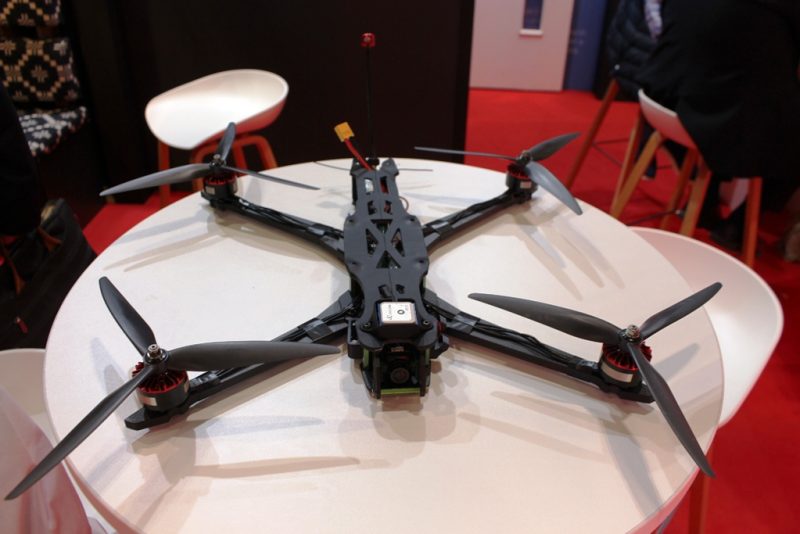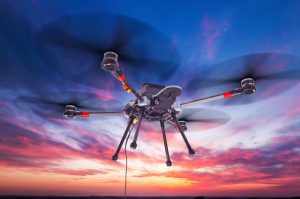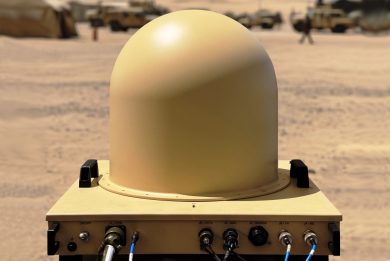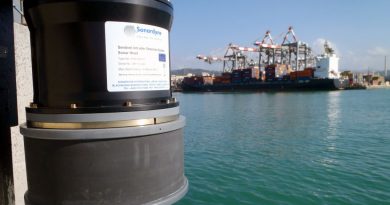DSEI 2025 – Drone Evolution develops drones free of Chinese components
The United Kingdom aims to centre itself in the emerging supply chains for military drones free of Chinese components and the UK company Drone Evolution, is developing a family of quadrotor drones using only UK components. The challenge is to produce large enough numbers of their drones to be competitive with the Chinese on price
With his military background, Drone Evolution Business Development Manager Andy Jeffrey has been able to gain an insight into how the drones could be used during a real-life military scenario. “We’ve got relatively small armed forces from what it used to be, so we’ve got to make everyone count in their capability,” he said. “Drones are a force multiplier so we can increase the capability of our front-line troops either in lethality or in intelligence and surveillance thus helping us make better tactical decisions that are safer for the troops.”
The company’s 15 inch quadrotor mini drones are made of ease of assembly and operations using one size bolts and one size arms, which can be replaced with larger ones to increase range, lift and payload. It had developed light and strong low profile payload droppers carrying up to 7 kg.
They have a carbon fibre frame, can be easily repaired on the field, an interchangeable camera provides day/night capabilities, an interchangeable rear antenna allows adding a counter-EW capability, and are 95% manufactured in the UK, Drone Evolution working on getting to 100%. When the Chinese government announced that it would stop the export of drone parts in 2025, Drone Evolution began to design and develop its own patented flight control and plug in radio frequency (RF) units, and electric motors.
The company is producing prototypes of the electric motors which will be productionised and manufactured by another British company while the batteries are sourced from South Korea as well as the UK. The video cameras will be supplied to the customer’s options from western sources. Flight testing of the drones is initially carried out in an internal test rig at its facility in Wales before transferring to a nearby small external flight test area.
The Runner and Sentinel drones exploit the same airframe, propulsion being provided by four electric motors powered by two ARES TPU-1661 30,000 MAH LIPO batteries. Motors activate 22-inch carbon-fiber polymer rotors, the drones unfolded dimensions being 750x750x150 mm. The Runner can reach a maximum speed of 23 m/s (83 km/h) and can deliver a 1kg of payload up to 40km or a 5kg up to 20km. The Sentinel is the tethered version of the Runner, and provides persistent aerial surveillance, tether length being 50 metres. The Sentinel is designed to support a range of applications such as increased ISR, EW and Communications Rebroadcast for extended periods of flight.
At DSEI the latest model designed and produced by Drone Evolution, the Scimitar, which is mostly dedicated to ISR missions, its 53 m/s (190 km/h) speed allowing to rapidly reach survey areas at the maximum range of 20 km. The Scimitar was the only drone visible in real at the London exhibition.
Jeffrey sees that the future of designing a mix of drones designed to UK armed forces rules of engagement, the development of swarm technology and the importance of training in operational scenarios.
Drone Evolution won a contract with the UK MoD for trials; six pilots were trained for over three weeks on Salisbury plains, the company drones being merged with a tank exercise to practice counter-drone warfare. The company also offers Red Air evaluation.
Drone Evolution is working with Ukraine and according to information gathered at DSEI its systems have already been successfully deployed to that country in 2024/25.
The company is among those due to benefit from the government investment into the Welsh defence industries.
Photos courtesy Drone Evolution and A. Haywood







